GIGABYTE BRIX Pro: A Second Look at the Intel i7-4770R with Iris Pro HD 5200
by Ganesh T S on June 14, 2014 5:00 PM ESTThermal Performance & Power Consumption
A discussion of the cooling system, fan speeds and subjective noise levels can be found in the first part of our BRIX Pro review. A couple of months back, GIGABYTE came forward with a new BIOS for the BRIX Pro. After installing that, we repeated our extreme power virus test of running Prime 95 and Furmark together at the same time. As expected, the system did throttle within two minutes of starting the test (as shown in the screenshot below).
I am yet to see a system equipped with a Core i7-4770R that has been able to keep up with the CPU and GPU being loaded up simultaneously, and manufacturers contend that it is hardly a realistic use-case. While we tend to agree to a limited extent, we felt it would be worthy of further evaluation. Towards this, we kicked off a run with only Prime 95 loading up all the CPU threads.
After 30 minutes of full CPU loading, we found that the core temperatures were held below 100 C, the clock speeds remained at 3.2 GHz for the CPU (the GPU was 'idling' at 200 MHz) and there was no thermal throttling to be seen. At this point, we introduced Furmark loading into the picture. It becomes clear that the system gives preference to CPU performance. The GPU remains throttled at 200 MHz, while the CPU cores don't thermally throttle.
This is quite a relief, as there are probably no realistic workloads out there which can stress both CPU and GPU to the maximum simultaneously. To verify whether GPU performance perks up after removal of CPU load, we stopped the Prime 95 job and let Furmark continue for more time.
After more than 45 minutes, we found the GPU still clocking in at 1 GHz and running without any throttling issues. The CPU cores were idling at 800 MHz.
On the whole, thermal performance seems to have improved quite a bit with the latest BIOS release and we are actually happy to see that CPU performance just doesn't throttle as long as the GPU doesn't simultaneously ramp up with the CPU.
In terms of power consumption, we gathered the idle and load power numbers (at the wall) with the new configuration. The numbers are presented below.
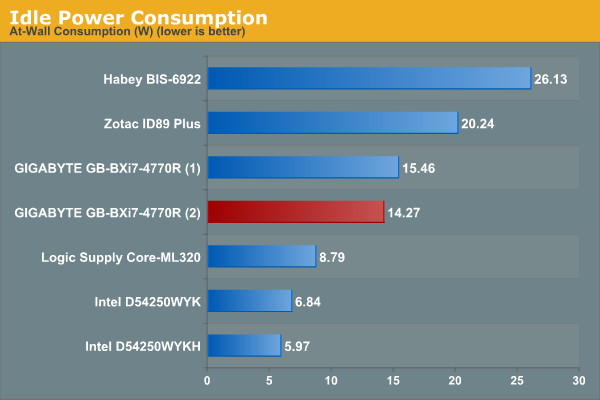
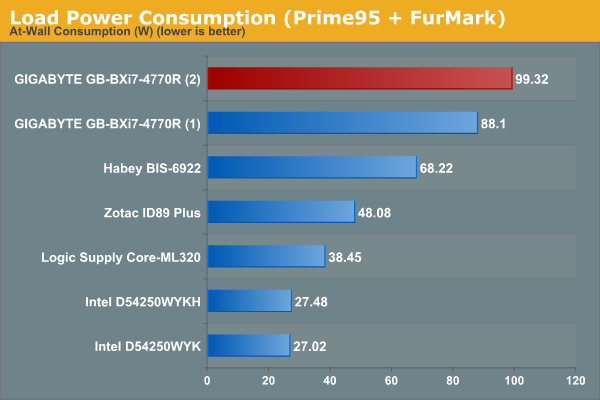
The numbers vary slightly from our initial configuration (more efficient at idle, but consumes more power at load), and I believe these related to the BIOS update as well as the memory and storage subsystem changes.


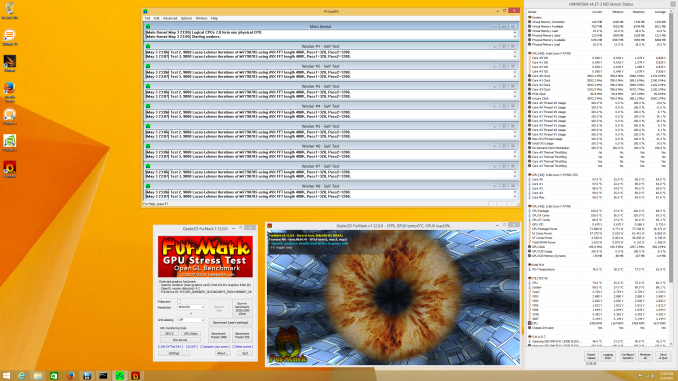
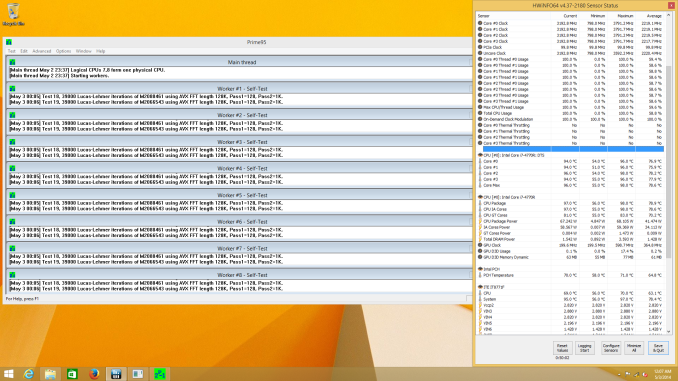
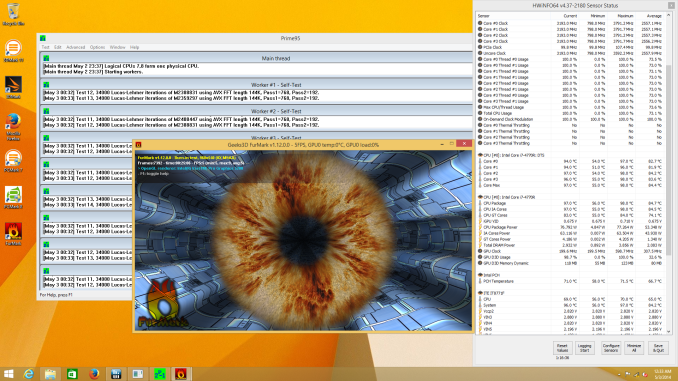
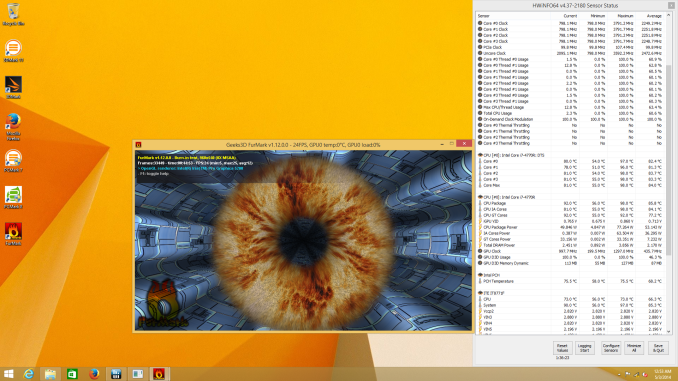








55 Comments
View All Comments
mikk - Saturday, June 14, 2014 - link
No driver version as usual, crap.extide - Saturday, June 14, 2014 - link
A little disappointing, I mean if you are building an iGPU system, you should be going for the best memory you can. 1866 is hardly much of an upgrade over 1600, you can easily get 2133 for a decent price, and 2400 or more if you want to spend.extide - Saturday, June 14, 2014 - link
Also would love to see some AMD APU benchmarks on here as well,And you left in: "(Add note about GT540M if possible)."
Otherwise pretty good!
ganeshts - Saturday, June 14, 2014 - link
Thanks, I fixed that :) I wasn't sure about getting the benchmark numbers from the Vision 3D 252B since I hadn't even booted that up in a long time. Actually, the whole piece was written up even before I started benchmarking that PC (which is why the references to the 540M probably stand out like a sore thumb!)monstercameron - Saturday, June 14, 2014 - link
Intel apus dont respond quite the same as amd ones...ddr3-1600 is as good as it gets.hojnikb - Sunday, June 15, 2014 - link
Yep, crystalwell can really helpddriver - Saturday, June 14, 2014 - link
Disappointing? The best CPU performance you can get in that factor, in which BTW graphics performance is pretty much irrelevant.NeatOman - Sunday, June 15, 2014 - link
1866/cas10 im sure was chosen to show what "normal ram" would result in. Also, if it where 2133/cas12 you would only be trading Mhz for Lantancy NOT resulting in any better performance at all. In fact you may even regress in compute heavy situations.Cellar Door - Monday, June 16, 2014 - link
Absolutely!! I'm also very disappointed in the ram choice of the reviewer - this is 2014 for crying out loud, if you are going to test a $900 system, what's another $30 for a 2400mhz kit - which is what this system should be running. Absolute waste of time... I'm a big fan of this site but its things like this that make me question their integrity. And where is an AMD APU for comparison?!?Wixman666 - Monday, June 16, 2014 - link
Have you guys all forgotten the absolutely miniscule performance differences, in the big picture, between RAM speeds? The higher speed memory just has higher and higher latency, ultimately producing nearly no net gains, and sometimes resulting in WORSE performance. There is a huge article here somewhere that supports that in the memory section. LATENCY has a massive impact on the performance!